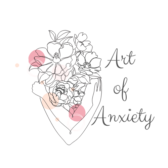When the feelings, thoughts, and sensations get overwhelming, learning how to self-regulate emotions using neuropsychology can be very useful.
Navigating emotions isn’t always easy. In fact, sometimes it’s pretty damn hard. If we don’t learn how to properly regulate and process our emotions as children, we often struggle as adults.
Through skills and techniques used in neuropsychology, we can explore ways to manage a spectrum of emotions, from stress to insecurity. There’s a lovely synergy between neuroscience and emotional regulation that can help us understand the brain’s intricate workings.
Let’s explore how to self-regulate emotions using neuropsychology.
Using Neuropsychology for Emotional Regulation
Picture this: you’re in the midst of an emotional storm, and suddenly, you’re handed a manual that explains the mechanics of your brain. That’s neuropsychology for you—a roadmap to understanding why emotions go haywire and how to steer them back on track.
I discovered the power of using neuropsychology for emotional regulation a few years ago and honestly been a game changer.
If You’re Feeling Stressed

Stress is something I really battle with, and managing it effectively is still a challenge for me. But there are things that I’ve found helpful. Breathing techniques are one of those things that I used to hear would help, and I’d shut down immediately.
But breathing is magic for emotional regulation. One of the ways you can self regulate your emotions is through the Physiological Sigh.
How Does it Work?
The Physiological Sigh is the fastest way to reduce autonomic arousal. Calming down the nervous system and activation neural circuits that are speciicaly used to calming the body down.
To perform this sigh, all you need to do is take two deep inhales through the nose (no exhale in between). Then fully exhale through your mouth until your lungs are completely empty.
Simple enough, right?
You can learn more with this video:
If You’re Feeling Anxious

The phrase “walk it off” is actually a pretty useful way to calm anxiety. When you walk, you trigger Amygdala Deactivation. By doing this, you take a deliberate step away from the chaos inside your mind
Walking it off is more than a cliché; it’s a science-backed remedy. One of my favorite anxiety books describes the Amygdala as follows:
“Hi! I’m the AMYGDALA, although my friends affectionately call me SATAN”
– Amalia Andrade, Things You Think About When You Bite Your Nails

How Does it Work
You Amydala is a small almond-shaped structure nestled in the brain. It is the heart of our emotional responses, particularly fear and anxiety. And if you struggle with high levels of anxiety, it’s a bit of a drama queen.
When triggered, it initiates the infamous fight-or-flight response, flooding the body with stress hormones. This reaction, while evolutionarily advantageous, can be counterproductive in our modern lives. By going for a walk, you can not only deactivate your amygdala, but it’ll also distract you from anxious thoughts and regulate your emotions.
If You’re Feeling Sad

Sadness is one of the feelings I avoid the most. I hate the feeling of it never ending and so I do everything I can to squish it down. To self-regulate your sad emotions, you need to move through them, literally.
After you’ve acknowledged and felt your feelings (this is an important step), then start moving your body to release endorphins. Whether it’s dancing, jogging, yoga, or simply shaking it off, the goal is to get those endorphins flowing.
How it Works
Endorphins are happy chemicals that instantly boost your mood. This chemical surges during exercise, reducing pain perception and creating a euphoric, happy sensation. The perfect antidote for sinking sadness, especially when it comes to the ‘big sad’ AKA depression.
If You’re Feeling Impulsive/Angry

We don’t make good choices when we’re angry or feeling impulsive. When blinded by rage, we often do or say things that we regret.
If you’re wondering how to self regulate emotions like anger, a good strategy from neuropsychology is dilating your gaze. By simply looking outside the window, you’ll blunt Norepinephrine release, giving you the space to can think clearly.
How Does it Work?
Norepinephrine, also known as noradrenaline, is a neurotransmitter and hormone that plays a role in stress response, alertness, and mood regulation. Blunting it will help you regain emotional control and self regulate by reducing its overwhelming impact.
If You’ve Got Low Motivation

When you’re angry, you want to reduce Norepinephrine, but if you’re searching for motivation, you actually want your body to release this hormone.
To do this, focus on one spot on your screen for 1 minute and enjoy a surprisingly effective shot of motivation
How Does it Work?
By staring at one spot, you engage in pupillary convergence (simultaneous movement of both pupils inward). This enhances concentration and engages the brain for increased focus.
If You’re Feeling Insecure or Have Low Self Worth

Feelings of insecurity or low self-worth can trigger things like imposter syndrome or lead to spiraling thoughts. It’s not fun and can often snowball.
But you can self-regulate through it using neuropsychology. All you need to do is grab a piece or paper (or even your phone) and write down your strengths.
How Does it Work?
The limbic system is a complex brain network involved in emotions, memories, and arousal. It includes the amygdala, hippocampus, and hypothalamus. By writing down your strengths, you engage in logical thinking, which overrides the limbic system.
How to Improve Self Regulation
While learning how to self regulate emotions with neuropsychology can be useful, it’s not a magical, instant solution to everything.
Rather, it’s a useful tool that can help you regulate your emotional responses, create new neural pathways, and master your anxiety. Using your body and these little tricks, can help you gain greater control and get through situations that are tough.

Kathryn is the creator of Art of Anxiety. She was diagnosed with GAD and MDD at 16 and has been working every day to master the art of anxiety ever since. Her favorite things to do are aerial yoga and hanging out with her cats while reading a good book.




